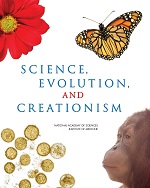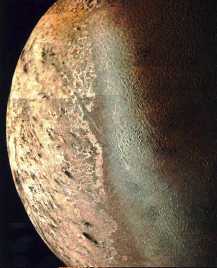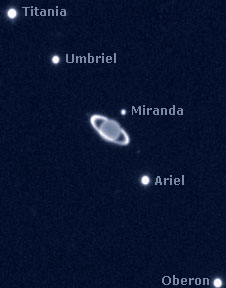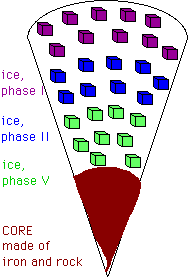This is a picture of Triton. Triton is Neptune's largest moon. The picture was taken by the Voyager 2 spacecraft.
Click on image for full size
NASA
Neptune's Moons and Rings
Neptune has
moons. It also has rings, but its rings are different from Saturn's.
Neptune's largest moon is named Triton.
Triton is much larger than any of Neptune's other moons. Triton is a very
cold place, so the moon is covered with ice. Triton has geysers like the ones
at Yellowstone Park on Earth. The geysers on Triton shoot out ice instead of
steam. The geysers shoot ice 8 km (5 miles) high into Triton's thin atmosphere!
The rest of Neptune's moons are much smaller than Triton. Gerard
Kuiper discovered a moon named Nereid in 1949. Other moons named Despina, Galatea, Larissa, Naiad, Proteus and Thalassa
were found by the Voyager 2 spacecraft in 1989.
Five more small moons have been found. Three
of those were discovered in 2002. Two
more were found in 2003. The newest moons don't have official names yet.
Neptune's rings are much darker than Saturn's
bright rings. Saturn's rings are made of ice, which reflects lots of
light. Neptune's rings are probably made of rocks and dust. Rocks and dust
don't reflect as much light.
You might also be interested in:

How did life evolve on Earth? The answer to this question can help us understand our past and prepare for our future. Although evolution provides credible and reliable answers, polls show that many people turn away from science, seeking other explanations with which they are more comfortable.
...more
Triton was discovered by W. Lassell in 1846. Of the 8 moons, it is the 2nd farthest from Neptune. Triton may be one of the largest of the icy moons with a diameter that is about half the distance across
...more
Gerard Kuiper was an American astronomer who lived between 1905-1973. He is considered the father of modern planetary science for his brilliant study of our solar system. Kuiper developed new techniques
...more
Astronomers have found new moons around the planets Uranus and Neptune. Uranus now has 27 moons that we know about. Neptune has 13 that have been found so far. Some of the new moons were found in pictures
...more
Pictures taken by the Hubble telescope show that Neptune's moon, Triton, has heated up since 1989. That means global warming isn't something that just happens on Earth.This increase in temperature is having
...more
Not only ice but several different kinds of snow (crushed ice) have been found on the surface of Triton. An idea of what the inside of Triton is made of can only be guessed because the Voyager spacecraft
...more
Triton is mostly made of ice, therefore there is probably a small core of some rocky material at the center, covered with different kinds of ice. If Triton is warm enough inside, then there could be water.
...more
This image of Triton reveals many neat features of its surface. The surface of Triton's surface is a mix of Ganymede's and Europa's surfaces. Old areas of Triton's surface have many craters and younger
...more











